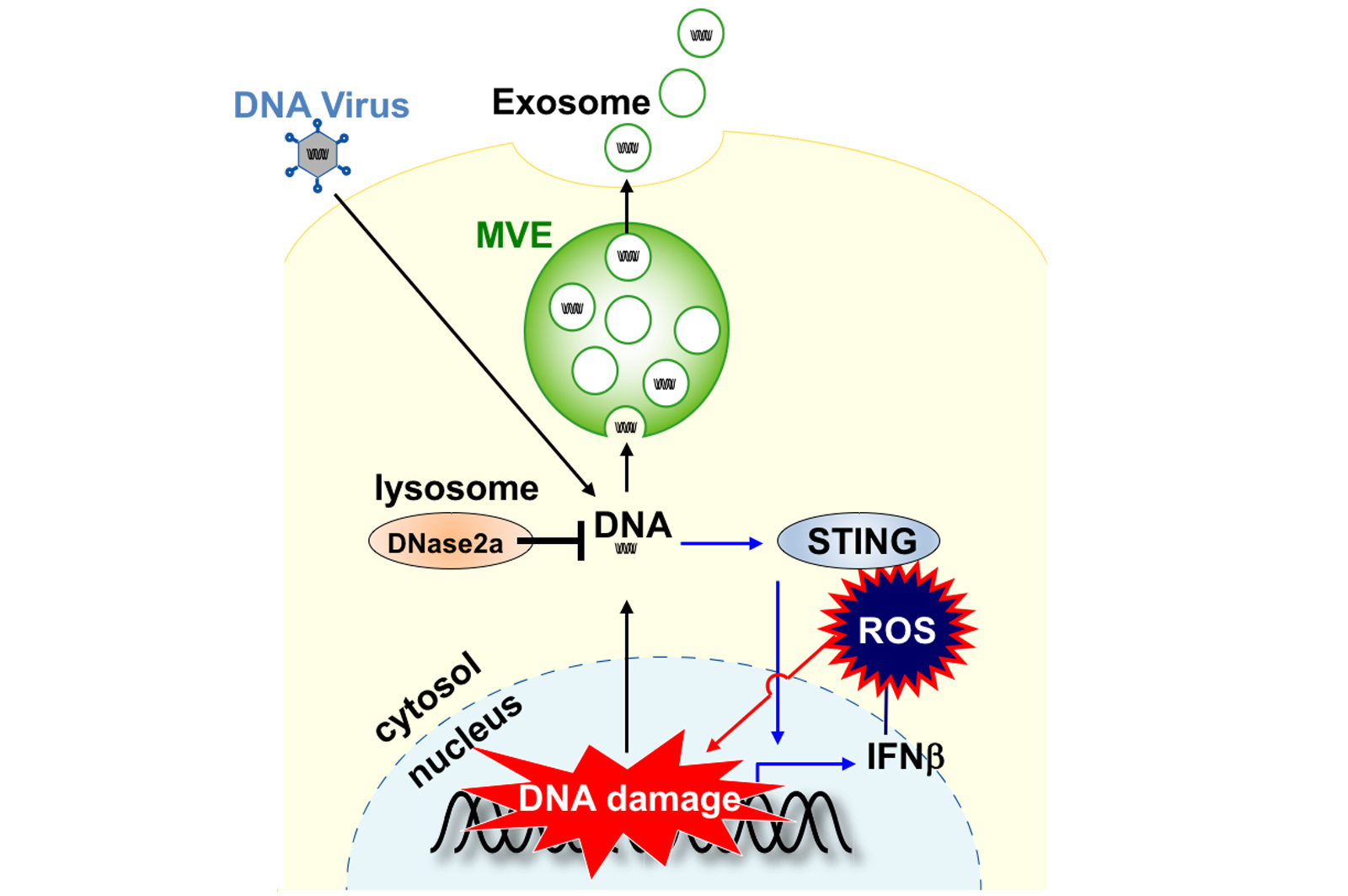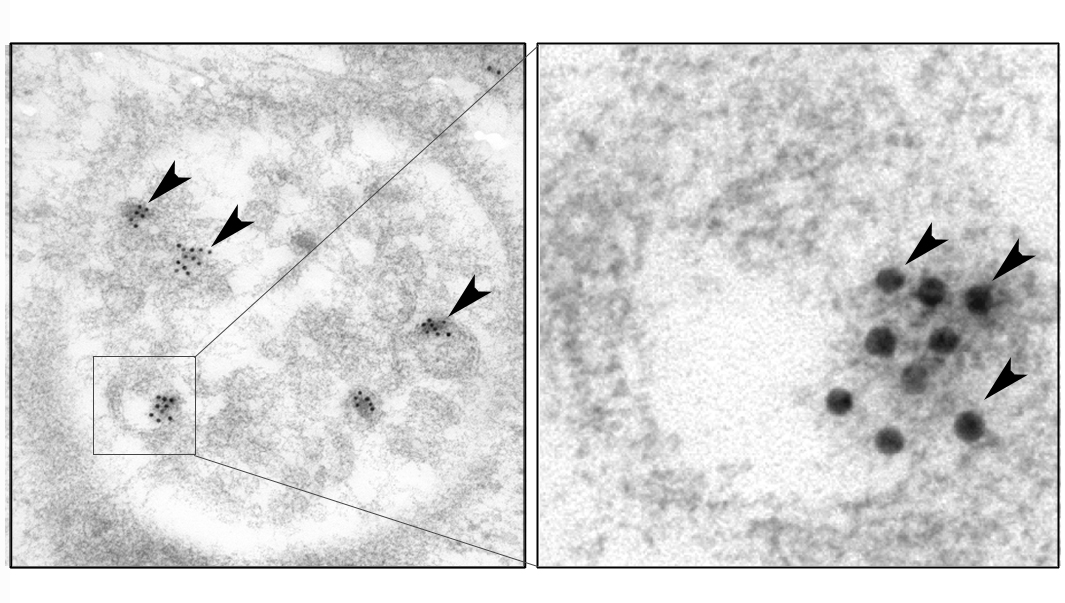Exosomes maintain cellular homeostasis by excreting harmful DNA from cells (Hara Lab in Nat. Commun.)
Emerging evidence has indicated that exosomes play important roles in intercellular communication, by serving as vehicles for transferring various cellular constituents, such as proteins, lipids and nucleic acids, between cells. However, very little is known about the biological roles of exosome secretion in exosome-secreting cells.
Early hypotheses favoured the notion that exosomes may function as cellular garbage bags that expel unusable cellular constituents from cells. However, this has not been explicitly proven. Since exosome secretion is reportedly increased in some senescent cells, we examined the effects of the inhibition of exosome secretion in senescent cells. Surprisingly, we discovered that reducing exosome secretion provokes a reactive oxygen species (ROS)-dependent DNA damage response (DDR), in both senescent and non-senescent cells. Interestingly, the activation of ROS-DDR is a consequence of the accumulation of nuclear DNA fragments in the cytoplasm, where they are recognised by STING, a cytoplasmic DNA sensor. This response was alleviated by the overexpression of a cytoplasmic DNase, the inhibition of STING activity, or the inhibition of ROS generated by the IFN pathway.
These results, together with the observations that exosomes contain chromosomal DNA fragments, indicated that exosome secretion plays an important role in maintaining cellular homeostasis by removing harmful cytoplasmic DNA from cells, at least in certain types of normal human cells. Notably, the inhibition of exosome secretion in mouse liver, using hydrodynamics-based RNA interference (RNAi), revealed that this pathway also functions in this tissue, suggesting that this machinery may contribute more broadly to tissue homeostasis in vivo. Finally, we extended these findings to the antiviral activity of exosome secretion, which expels infected adenoviral DNA from cells.
Thus, although we cannot exclude the possibilities that exosome secretion maintains cellular homeostasis by expelling not only cytoplasmic DNA but also other harmful cellular constituents from cells, our findings delineate a novel mechanism that links exosome secretion and cellular homeostasis.
Lower Fig.
dsDNA containing Exosomes. ds DNA is shown as black dots.
This article is published in Nature Communications.
Exosomes maintain cellular homeostasis by excreting harmful DNA from cells.
Links
- Home
- Achievement
- Research Activities
- Exosomes maintain cellular homeostasis by excreting harmful DNA from cells (Hara Lab in Nat. Commun.)









